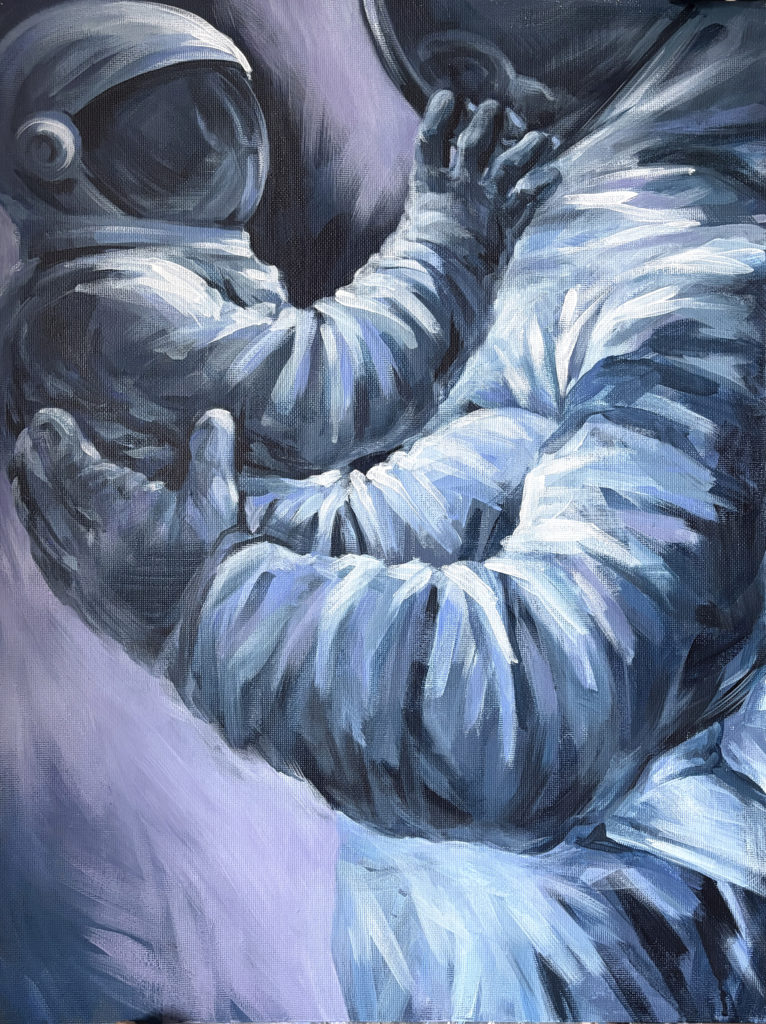
“MEMORY”
2025
Modified acrylic on board
60 x 80
In MEMORY, the gesture between the two astronauts—larger and smaller—becomes more than intimacy; it is the axis of human continuity. The larger astronaut is not only a protector but the living archive of civilization: the accumulated curiosity, failures, triumphs, and reflections of countless generations. The smaller astronaut represents potential, not merely of a child, but of all that humanity might carry forward: knowledge, conscience, imagination, and the unbroken thread of awareness.
The violet cosmos behind them is no passive backdrop; it is time and existence rendered visible, a dimension where the faintest echoes of thought and memory linger like cosmic dust. Each hue and gradation is a record of human perception, a subtle reminder that our consciousness leaves traces even in the vastest emptiness. To touch the helmet is to connect DNA to culture, instinct to reasoning, instinctive wonder to deliberate thought.
At this scale, MEMORY becomes a symbol of the human project itself: a species navigating infinity, not by dominance, but by the fragile, deliberate act of passing forward awareness. The astronauts embody the paradox of being: fragile yet enduring, solitary yet connected, transient yet capable of continuity across unimaginable distances and time spans.
The act of bearing one another is simultaneously literal and metaphysical. The larger astronaut holds memory, history, and accumulated experience; the smaller one carries possibility, transformation, and the responsibility to continue. Together, they trace a line between what has been understood and what must yet be discovered, a line that stretches from the singular human experience to the collective arc of consciousness.
In the framework of IMMORTALIS CONTINUUM, MEMORY is a node in the long thought of humanity. It bridges scales: from the intimacy of a hand on a helmet, to the cosmic expanse of existence; from one fragile body to the continuity of the species; from a single act of care to the enduring structures of civilization, culture, and collective awareness. It asks: how do we persist, not only as bodies, but as meaning, thought, and observation?
The painting’s quiet gesture becomes a manifesto: to endure is not enough. To continue is to observe, to remember, to teach, to transmit, and to carry the spark of life and reflection forward, across every gap of time, space, and uncertainty. In MEMORY, the cosmos itself seems to respond: awareness meets awareness, continuity meets potential, and the human project—delicate, audacious, infinite—holds itself in balance, stretching outward yet anchored in tenderness.